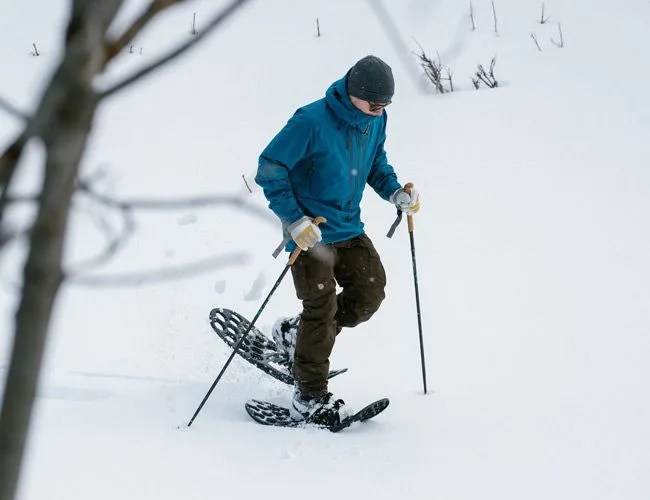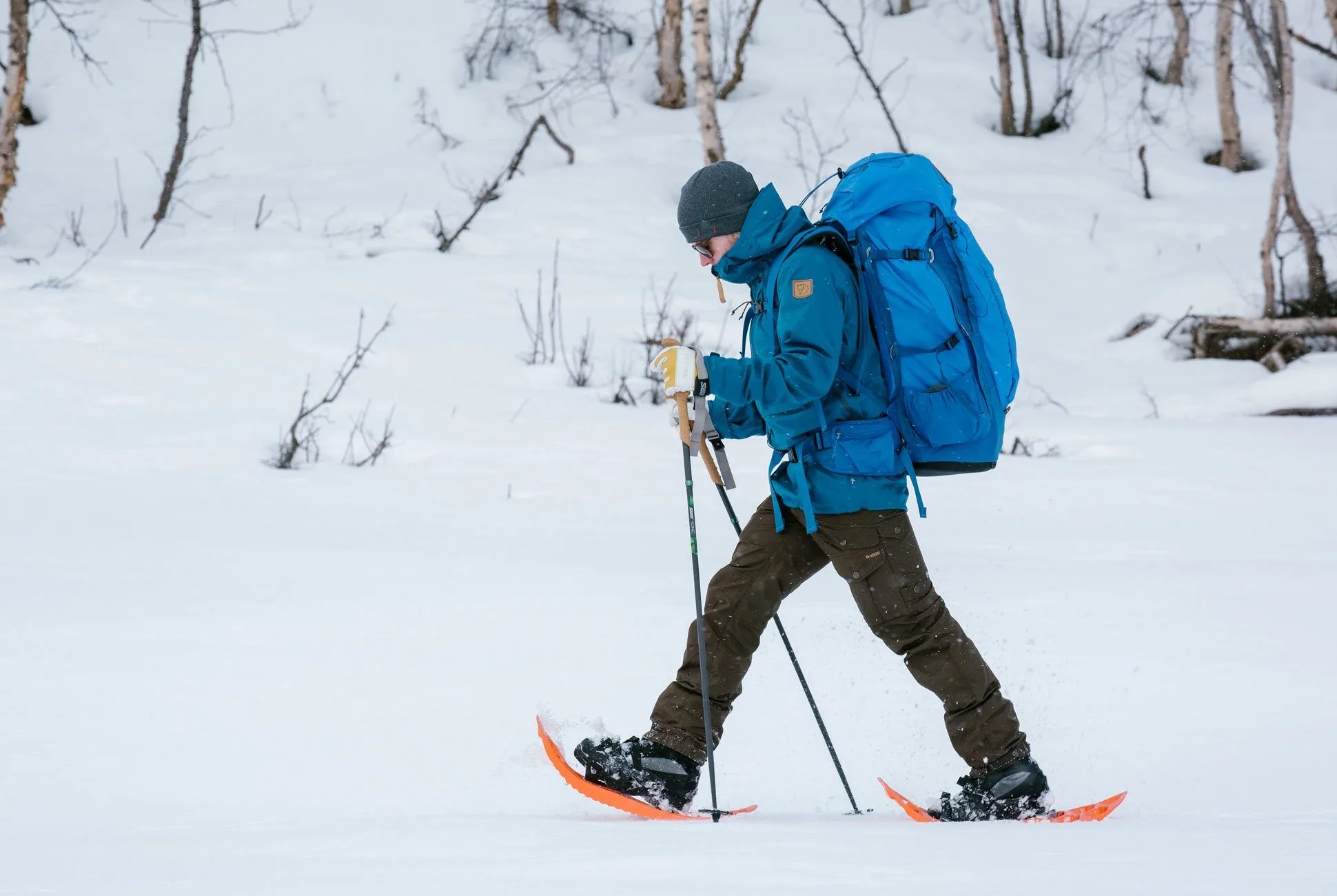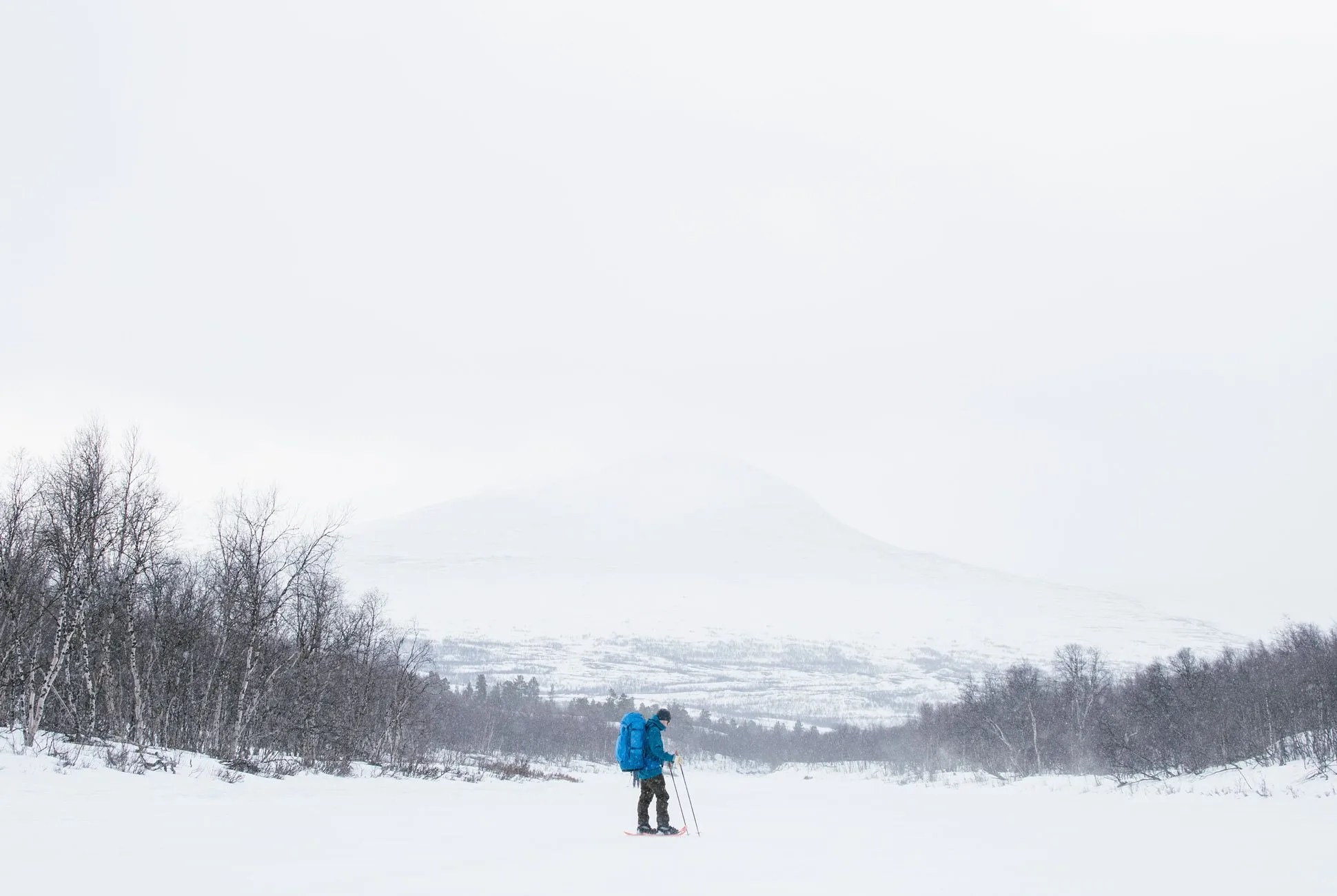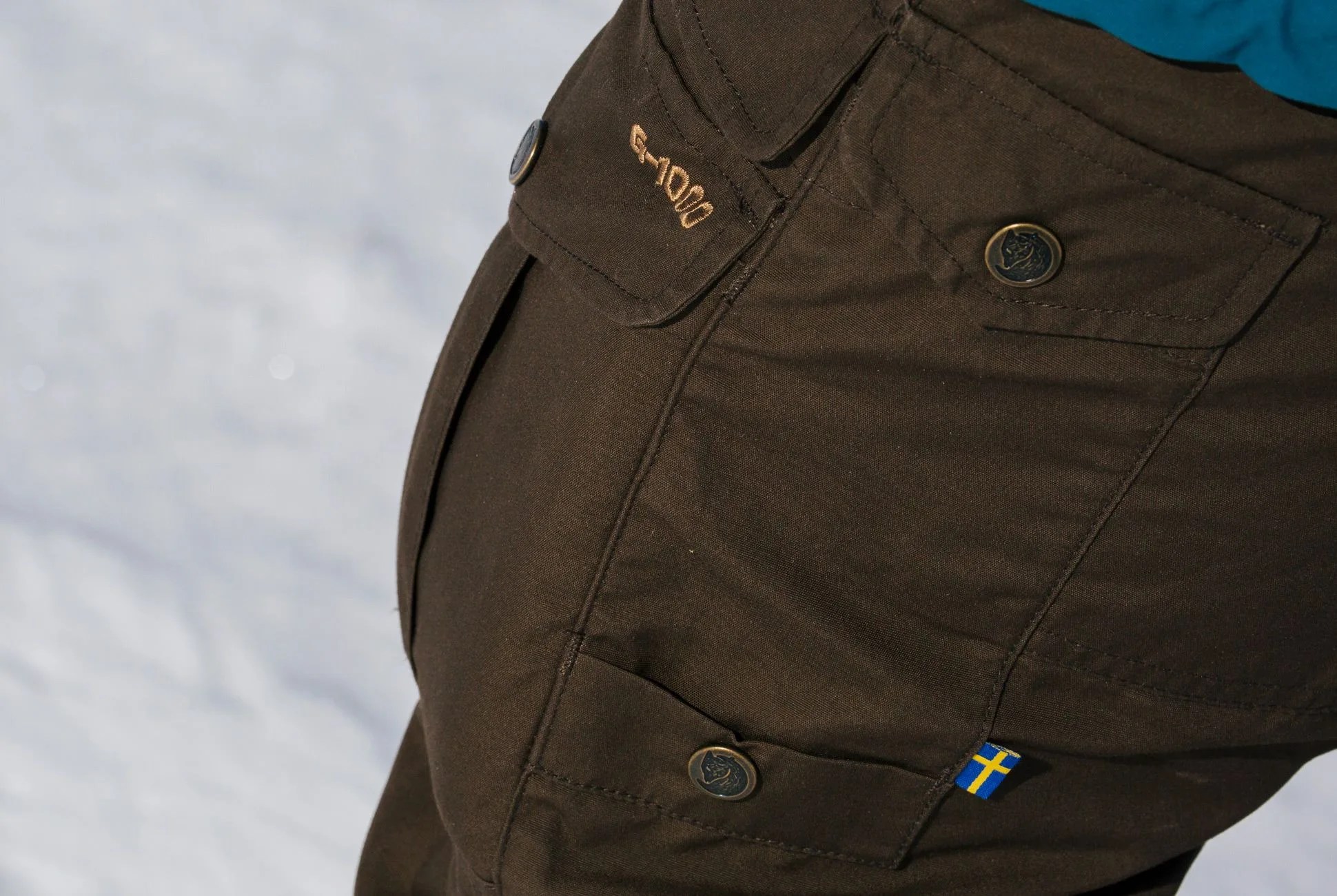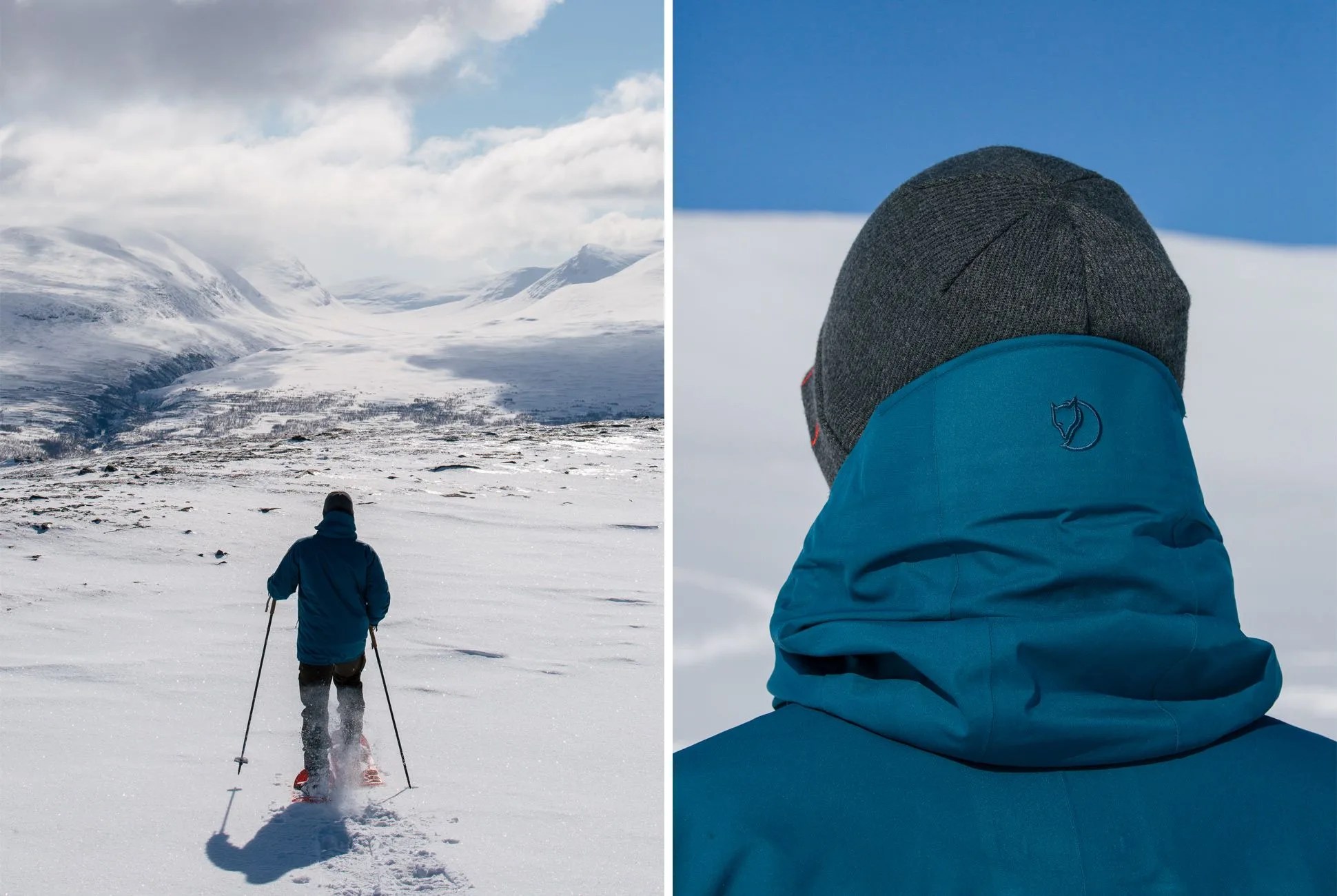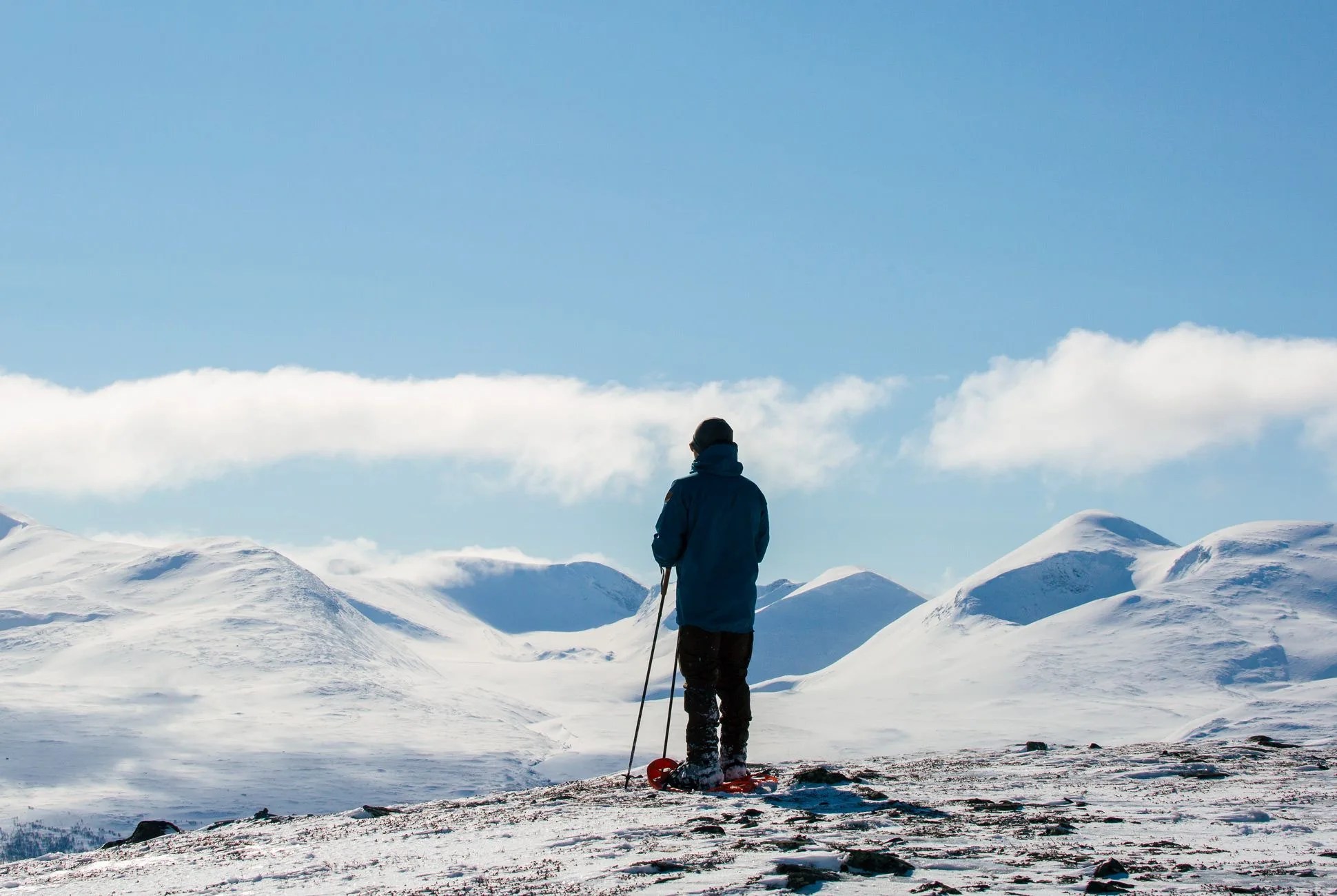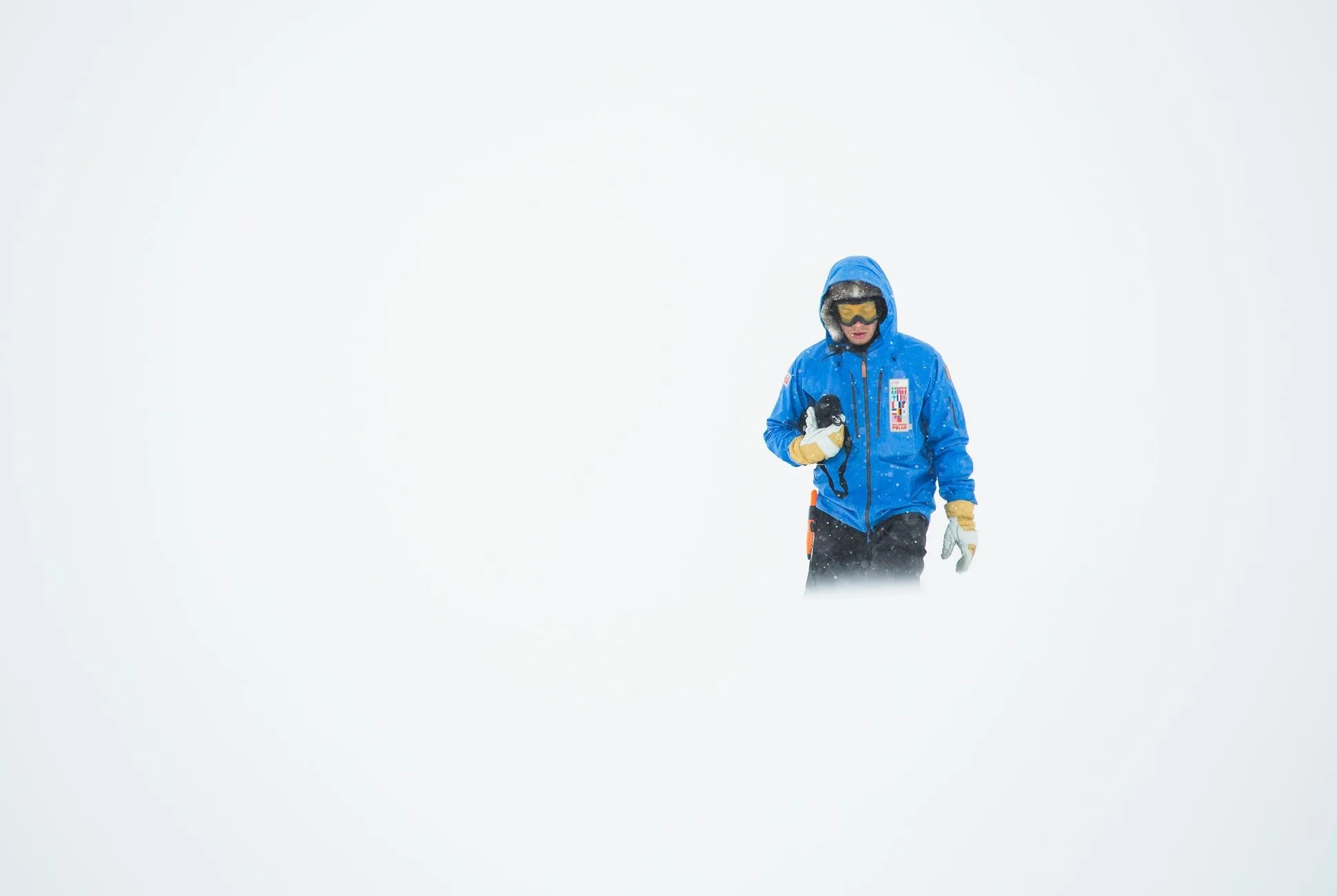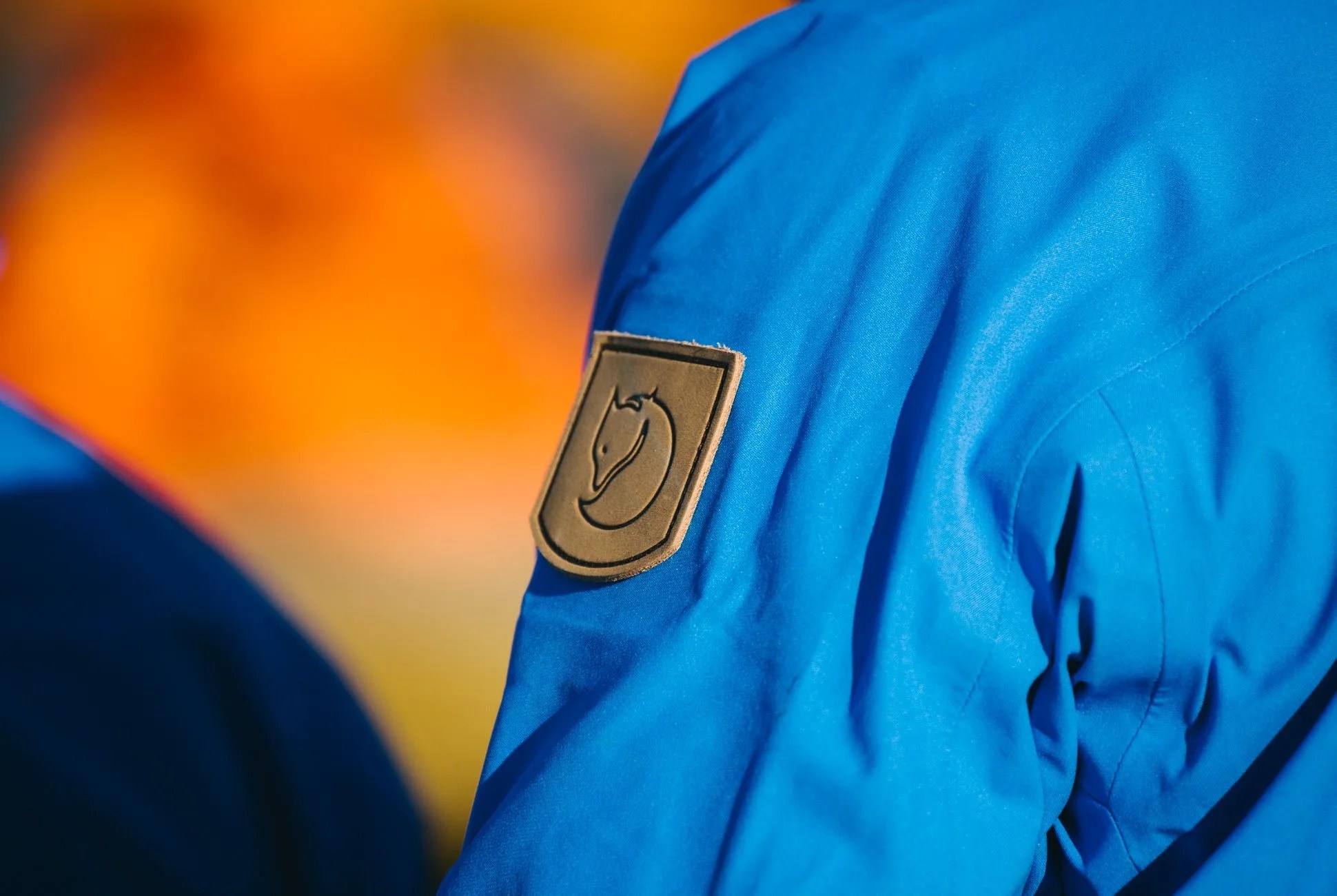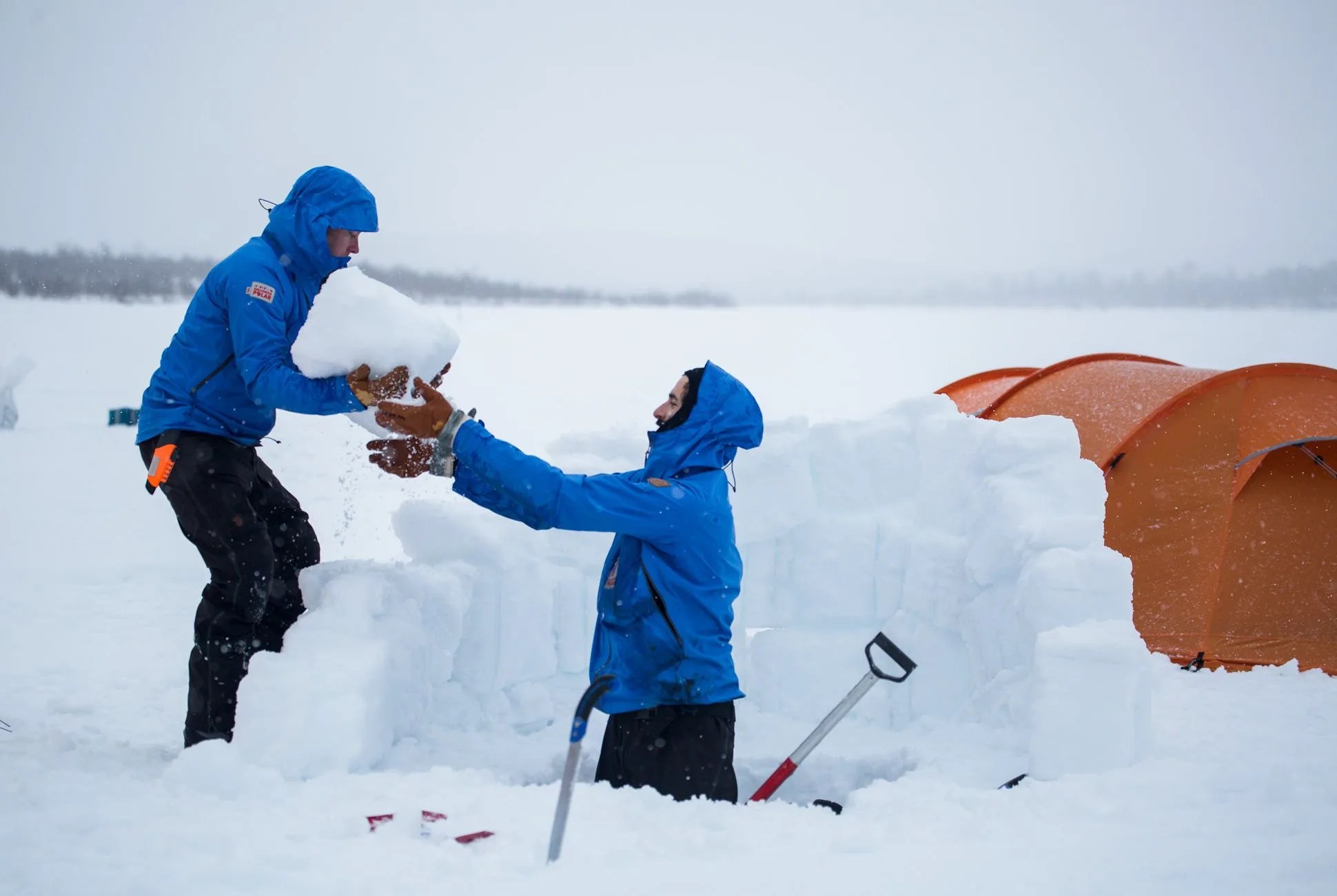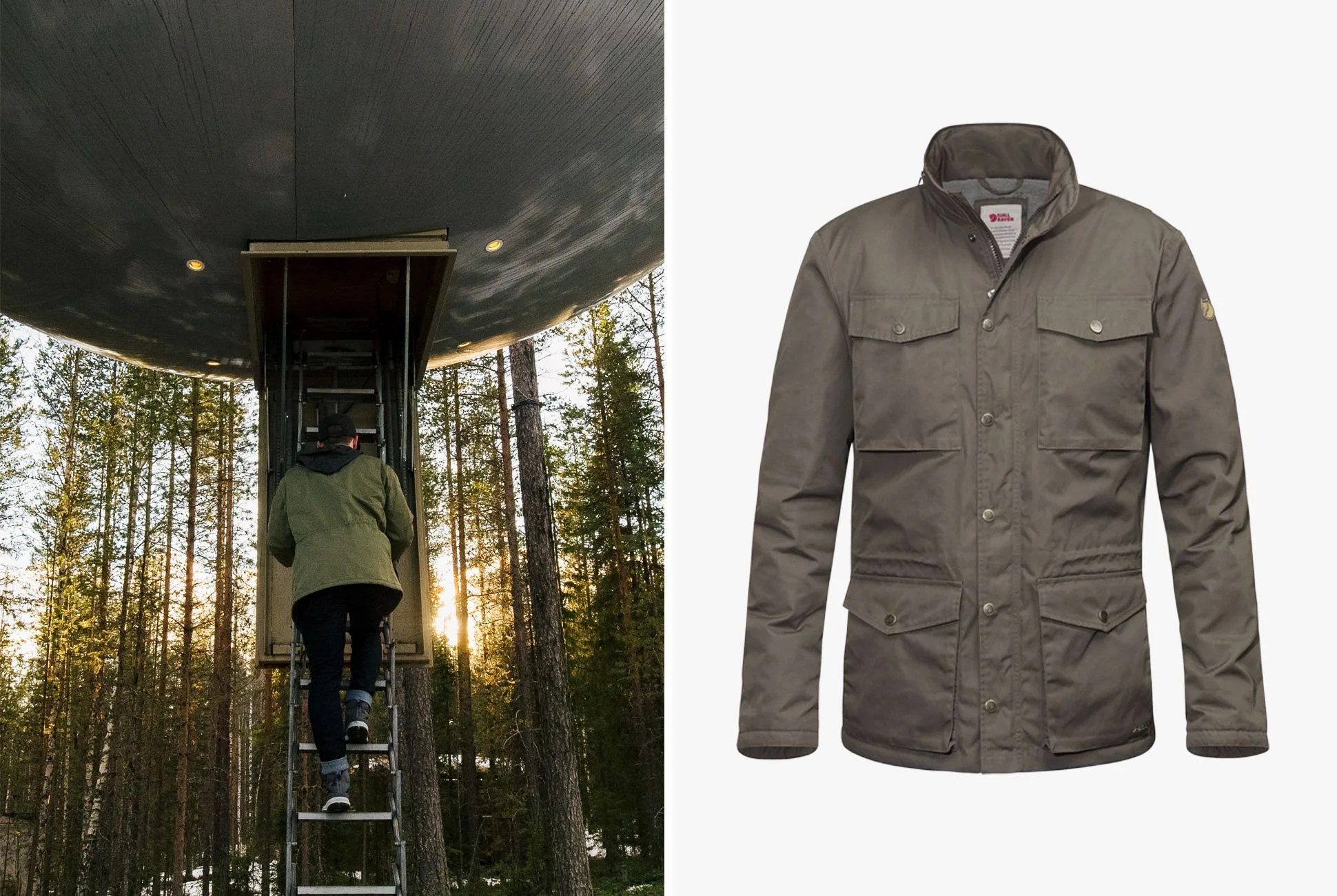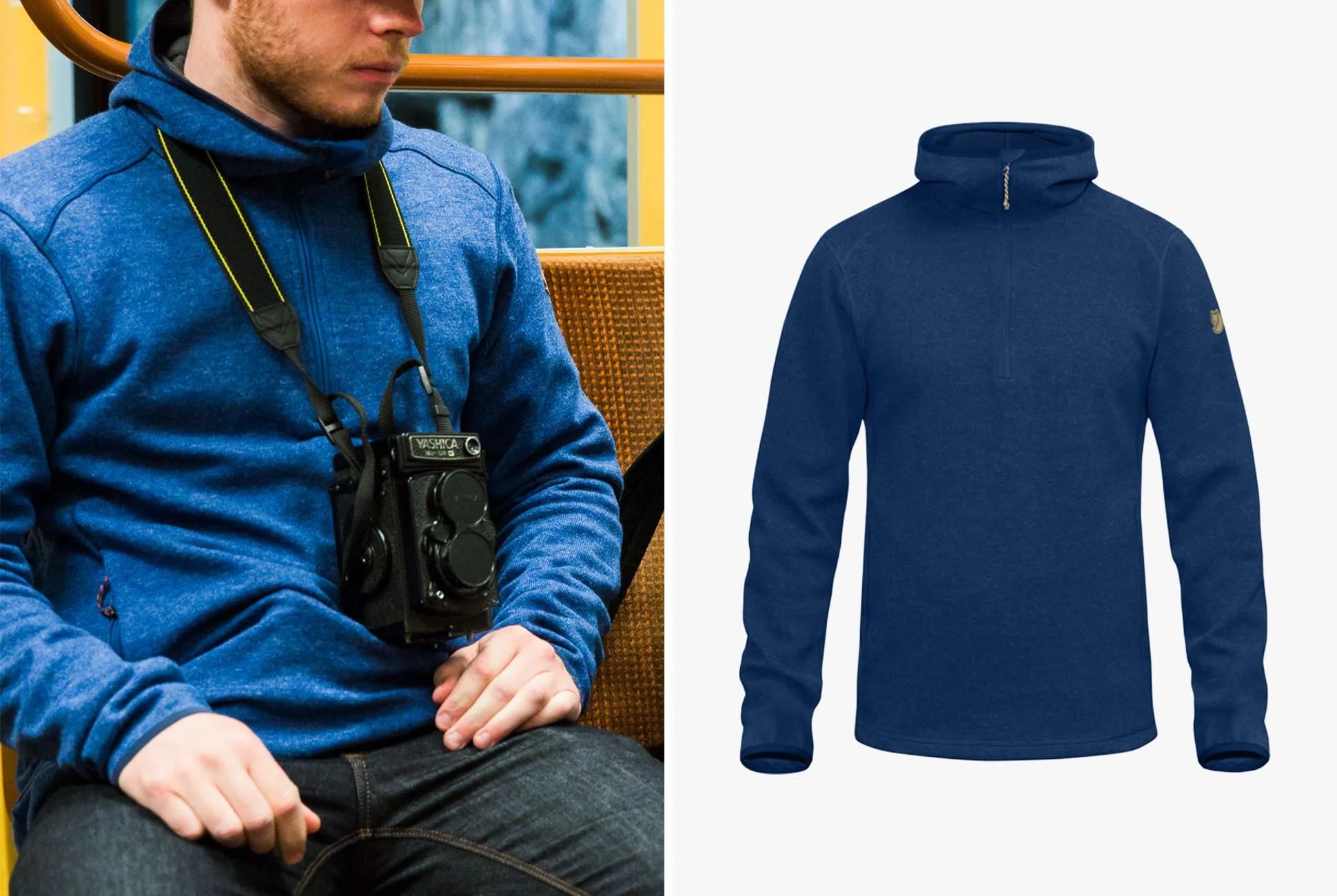9 photos

“We have new fabrics and new materials, but when something works, we’re not afraid of keeping it and staying true to that,” said Henrik Andersson sitting, in Fjällräven headquarters in Stockholm, Sweden. Andersson, Fjällräven’s head of Innovation & Design, is referring to the Swedish outdoor brand’s G-1000® fabric, a blend of recycled polyester and organic cotton that is infused with the brand’s proprietary wax blend called Greenland Wax. The wax, which is a natural blend of beeswax and paraffin, is an eco-friendly solution to weather treating garments that can be reapplied indefinitely. The material that was originally developed by founder Åke Nordin in 1968 and remains a mainstay in Fjällräven’s line today. In addition to the original G-1000® fabric, Fjällräven tweaked and finessed G-1000® into a handful of more modern fabrics, while always staying true to the brand’s original outdoor heritage.
Fjällräven’s design process differs from many other companies. It isn’t out to make products cheaply or quickly, and, conversely, it isn’t out to make expensive and over-engineered products for no reason. “Material efficiency and longevity is something that we’ve always worked hard on,” said Andersson. Fjällräven products are known for being simple, durable and useful across a number of categories. While most products are designed specifically for trekking and hiking, they can be worn for a number of other outdoor sports and also casually.
“We base the entire design process around making the products as functional as possible and as easy to use as possible,” said Andersson. “We seldom start with a price point. We don’t try to look at competitors and say, ‘They have those products, so we must also have those products.’ Oftentimes the vision comes from the field and from the testing.” The design process takes two to four years from start to finish, and it begins with a dedicated product-testing team led by Johan Skullman. Skullman, a veteran of the Swedish military and a man with 30 years of professional experience in the outdoors, leads a team that tests Fjällräven’s prototype gear around the globe. His feedback, along with the designer’s ingenuity, leads to durable gear that doesn’t fail when it matters most.
“We never try to make the world’s most lightweight product. We don’t try to make the world’s most lightweight tent. We have lightweight as an aspect, but if it doesn’t hold up over time then we don’t think that it’s a Fjällräven product,” said Andersson. That means no paper-thin shells that can rip the second they get caught on stray branches. That means no fashion-focused outdoor gear that’s only good for the runway. Andersson’s goal is to create products that last 30 (or more) years and look better with age — and with use.
